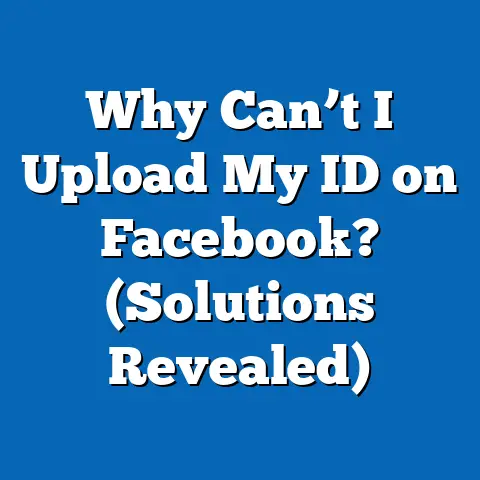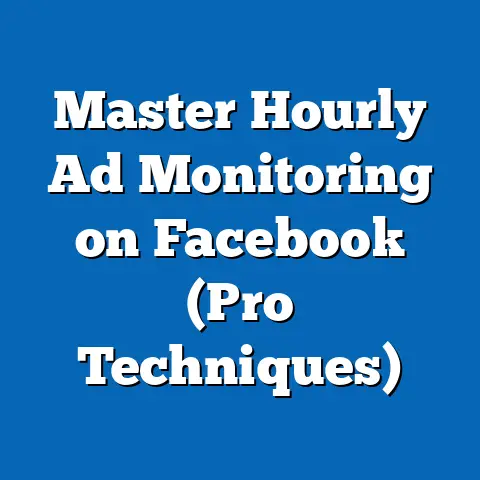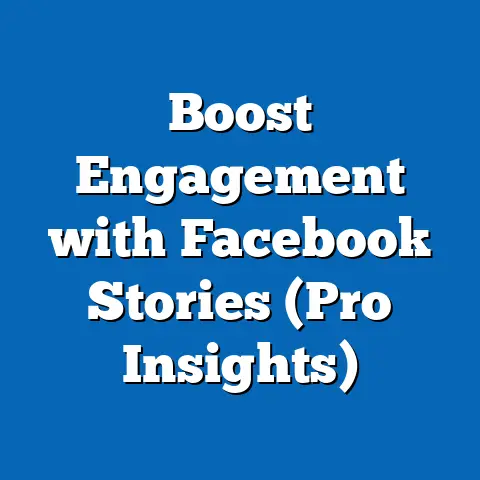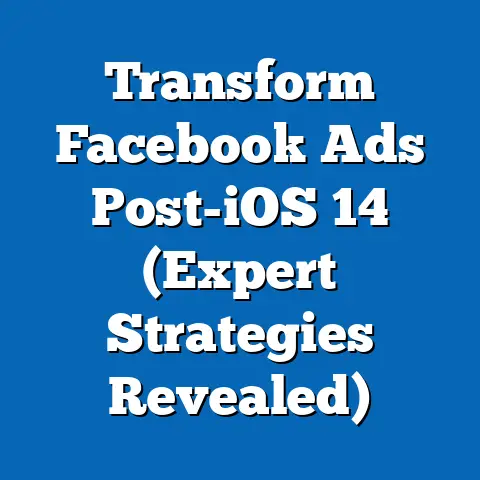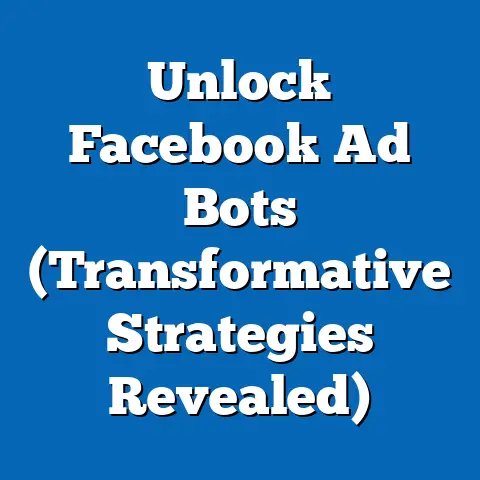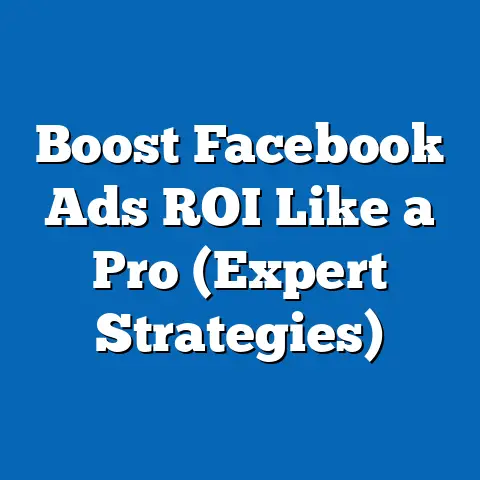Boost Conversions: Facebook vs. Amazon Ads (Pro Insights)
Imagine you’re looking for a new pair of running shoes. On one hand, you could stroll through a bustling marketplace, vibrant with sights and sounds, where vendors try to catch your eye with personalized recommendations and eye-catching displays. That’s Facebook, a place where discovery and engagement reign supreme. On the other hand, you could head to a well-organized department store, where everything is neatly categorized, and you know exactly where to find the athletic wear section. That’s Amazon, a place where purchase intent is high, and the path to buying is direct.
Both experiences are valuable, but they cater to different needs and mindsets. Similarly, Facebook and Amazon ads, while both powerful advertising tools, serve unique purposes in the digital marketing landscape. They create different user experiences and, consequently, offer distinct conversion opportunities. As someone who’s spent years navigating the ever-evolving world of digital advertising, I’ve seen firsthand how businesses can leverage both platforms to achieve their marketing goals.
In this article, I’ll delve into a detailed comparison of Facebook and Amazon ads, exploring their effectiveness in boosting conversions. I’ll share pro insights, real-world case studies, and expert opinions to help you understand which platform—or perhaps a strategic combination of both—is the right choice for your business.
Understanding the Platforms
Before diving into the nitty-gritty of conversions, it’s crucial to understand the fundamental differences between Facebook and Amazon’s advertising ecosystems.
Facebook Ads Overview
Facebook’s advertising ecosystem is built on the foundation of social connection. It’s a place where people come to connect with friends and family, discover new interests, and engage with content. As an advertiser, this gives you the unique opportunity to reach a vast audience based on incredibly granular targeting options.
Think of it this way: Facebook knows a lot about its users. Demographics, interests, behaviors, life events—it’s all data that fuels Facebook’s powerful targeting capabilities. You can segment your audience based on everything from their favorite hobbies to their purchasing history.
Facebook also offers a diverse range of ad formats, including:
- Image Ads: Simple, visually appealing ads that are great for showcasing products or services.
- Video Ads: Engaging ads that can capture attention and tell a story.
- Carousel Ads: Ads that allow you to display multiple images or videos in a single ad unit.
- Collection Ads: Ads that showcase a catalog of products with a visually immersive experience.
- Lead Ads: Ads that allow you to collect leads directly from the Facebook platform.
The engagement aspect of Facebook ads is also crucial. Users can like, comment, and share your ads, which can significantly amplify your reach and build brand awareness. However, keep in mind that users on Facebook aren’t necessarily looking to buy something at that exact moment. They’re there to socialize, be entertained, and stay informed. This means your ads need to be compelling enough to interrupt their social experience and pique their interest.
Takeaway: Facebook ads excel at reaching a broad audience, building brand awareness, and generating leads. The platform’s diverse ad formats and granular targeting options allow you to create highly engaging campaigns.
Amazon Ads Overview
Amazon’s advertising model, on the other hand, is fundamentally different. It’s built on a product-centric approach, where users are actively searching for specific items. The primary goal of Amazon ads is to drive sales directly on the Amazon platform.
When someone searches for “best running shoes” on Amazon, they’re typically ready to make a purchase. This high purchase intent is what makes Amazon ads so powerful. You’re reaching users at the exact moment they’re looking to buy.
Amazon offers several types of ads, including:
- Sponsored Products: Ads that appear within search results and product pages, showcasing individual products.
- Sponsored Brands: Ads that showcase your brand and multiple products, appearing at the top of search results.
- Sponsored Display: Ads that target users based on their browsing history and purchase behavior, appearing on and off Amazon.
The success of Amazon ads hinges on factors like product listing optimization, relevant keywords, and competitive pricing. Your product listing needs to be clear, concise, and informative, with high-quality images and compelling descriptions. You also need to bid on relevant keywords that users are likely to search for.
Takeaway: Amazon ads excel at driving direct sales by targeting users with high purchase intent. Optimizing your product listings and bidding on relevant keywords are crucial for success.
Target Audience and Intent
The key to successful advertising lies in understanding your target audience and their intent. How do Facebook and Amazon differ in this regard?
Facebook Ads Targeting
As I mentioned earlier, Facebook’s targeting capabilities are incredibly granular. You can reach users based on a wide range of factors, including:
- Demographics: Age, gender, location, education, income, etc.
- Interests: Hobbies, passions, favorite brands, etc.
- Behaviors: Purchasing habits, online activity, travel patterns, etc.
- Custom Audiences: Lists of existing customers or website visitors that you upload to Facebook.
- Lookalike Audiences: New audiences that Facebook creates based on your existing customers or website visitors.
This level of targeting allows you to create highly tailored messaging that resonates with your specific audience. For example, if you’re selling eco-friendly yoga mats, you can target users who are interested in yoga, sustainability, and healthy living.
Retargeting also plays a crucial role in boosting conversions on Facebook. You can retarget users who have visited your website, added items to their cart, or engaged with your previous ads. This allows you to stay top-of-mind and encourage them to complete their purchase.
Example: I once ran a campaign for a local bakery, retargeting users who had visited their website and viewed their cake menu. By showing them mouthwatering images of their cakes, we were able to significantly increase online orders.
Takeaway: Facebook allows you to reach a highly specific audience with tailored messaging, making it ideal for building brand awareness and driving targeted traffic to your website.
Amazon Ads Targeting
Amazon’s targeting capabilities are primarily based on user behavior within the Amazon platform. You can target users based on:
Example: If you’re selling a garlic press, you want to target users who are searching for “garlic press,” “kitchen gadgets,” or “cooking tools.” Your ad should clearly highlight the benefits of your garlic press, such as its ease of use and durability.
Takeaway: Amazon allows you to reach users with high purchase intent, making it ideal for driving direct sales and increasing product visibility.
Conversion Metrics
Now, let’s talk about the metrics that matter when measuring the success of your Facebook and Amazon ad campaigns.
- Click-Through Rate (CTR): The percentage of users who click on your ad after seeing it.
- Cost Per Click (CPC): The amount you pay each time someone clicks on your ad.
- Conversion Rate: The percentage of users who complete a desired action (e.g., purchase, sign-up) after clicking on your ad.
- Return on Ad Spend (ROAS): The amount of revenue you generate for every dollar you spend on advertising.
While these metrics are relevant to both platforms, their average values and interpretations can differ significantly.
According to industry research, the average conversion rate for Facebook ads is around 1-2%, while the average conversion rate for Amazon ads is around 3-5%. This difference reflects the higher purchase intent of users on Amazon.
However, it’s important to remember that conversion goals may differ between the two platforms. On Facebook, you might be focused on building brand awareness, generating leads, or driving traffic to your website. On Amazon, your primary goal is likely to be direct sales.
Example: I worked with a clothing brand that used Facebook ads to drive traffic to their website and build their email list. While their conversion rate on Facebook was relatively low (around 1%), they were able to generate a large number of leads, which they then nurtured through email marketing.
Takeaway: Focus on the metrics that align with your specific business goals. While Amazon may offer higher conversion rates for direct sales, Facebook can be more effective for building brand awareness and generating leads.
Case Studies and Expert Insights
Let’s take a look at some real-world examples of successful campaigns on both Facebook and Amazon.
Case Study 1: Facebook – Subscription Box Startup
A subscription box startup selling artisanal coffee beans used Facebook ads to target coffee lovers with an interest in unique and ethically sourced products. They used visually appealing video ads showcasing the roasting process and the stories behind their coffee beans. By targeting a niche audience and creating engaging content, they were able to generate a high volume of leads and drive subscriptions.
Case Study 2: Amazon – Electronics Retailer
An electronics retailer used Amazon ads to promote their line of Bluetooth speakers. They optimized their product listings with relevant keywords and high-quality images. They also ran Sponsored Products campaigns targeting users who were searching for “Bluetooth speakers,” “portable speakers,” and “wireless speakers.” By focusing on product relevance and competitive pricing, they were able to significantly increase sales.
Expert Insight 1: Digital Marketing Consultant
“Facebook ads are great for building brand awareness and reaching a broad audience, but you need to have a strong content strategy and a clear call to action. Don’t expect to see immediate sales. Focus on building relationships and nurturing your audience.”
Expert Insight 2: E-commerce Specialist
“Amazon ads are all about product relevance and competitive pricing. You need to optimize your product listings, bid on relevant keywords, and make sure your prices are competitive. If you can do that, you’ll see a significant increase in sales.”
Takeaway: Successful campaigns on both platforms require a deep understanding of your target audience, a clear strategy, and a commitment to optimizing your ads.
Conclusion
In conclusion, both Facebook and Amazon ads offer unique opportunities to boost conversions for your business. Facebook excels at building brand awareness, generating leads, and driving targeted traffic, while Amazon is ideal for driving direct sales and increasing product visibility.
The key is to choose the right platform based on your specific business goals, target audience, and budget. Consider your unique needs when strategizing your ad campaigns. Don’t be afraid to experiment and test different approaches to see what works best for you.
The future of advertising on social media and e-commerce platforms is constantly evolving. By staying informed, adapting to new trends, and focusing on delivering value to your audience, you can maximize your advertising ROI and achieve your business goals.

